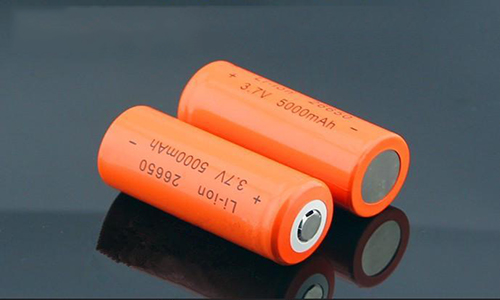Talk about Lipo Battery Safe Discharge Voltage
Aug 21, 2019 Pageview:2025
Introduction
Lithium Polymer batteries which are commonly referred to as LiPo batteries are a newer type of battery technology and are now used in many electronic devices. They are popular for their long run times and high power. Lithium polymer batteries offer many benefits, however, when it comes to buying one, you need to consider the benefits and the drawbacks of these batteries. LiPo batteries are safe to use only if you follow the instructions of usage and take care of the batteries the way they should be.?
The LiPo batteries contain one important component, which is obviously lithium, an alkali metal. Lithium reacts with water and combusts. It also combusts when it reacts with oxygen when it is heated. These batteries have high energy density, high discharge rate and are lightweight which make them great for RC applications. There are so many things to learn about the LiPo battery, but in this article, we will mainly focus on the safe discharge voltage of the LiPo battery.
What is the lowest safe voltage for LiPo battery?
LiPo batteries have a nominal voltage of 3.7 volts per cell. Therefore, fewer cells can be used to make up a battery pack. Nominal voltage is usually referred to as default, resting voltage of a battery pack. This is not the full voltage of the cell, but rather it is an industry-standard that is used to discuss and compare batteries because it varies for all battery chemistry types.?
The smallest of electric RC models need a LiPo battery pack which contains just one cell.?Others require at least two or more cells arranged in series to provide a higher voltage. For larger RC models, the number of cells in the battery pack can be as high as 6 cells and even more for larger high voltage applications.
If a battery has 7.4V, which means that there are two cells in series, thus meaning that the voltage gets added together. Also sometimes, you might come across people talking about a 2S battery pack meaning there are 2 cells in series.
Additionally, in the early days of LiPo batteries, you might have seen a battery pack described as 2S2P. This meant there were four cells in the battery pack whereby two cells are wired in series, and two other cells are wired into the first two cells in parallel, meaning that the capacities are added together. This terminology is not common nowadays because modern technology allows for individual cells to hold much more energy than they could only a few years ago.
The discharge rate is the single most overrated and misunderstood of all battery ratings. The discharge rate refers to how fast a battery can be discharged safely while remaining healthy. For instance, a battery with a discharge rating of 10C would mean you could easily and safely discharge it at a rate 10 times more than the capacity of the pack, a 15C pack would mean ??15 times more, and so on.
The higher the C rating, the more expensive and even slightly heavier the battery gets.
A LiPo battery should never be discharged below 3.0 volts. LiPo cells heat up fast and can be irreversibly damaged when over-discharged. Most manufacturers put low voltage cut-off (LVC) on their speed controls. The LVC detects the voltage of the battery and the divides the voltage by the number of cells in the battery. Most LVCs cut-off at around 3.2 per cell. For instance, for a battery with two cells, that would be 6.4V. But if the battery is not balanced, the voltage could be above the cut-off threshold, and yet still have a cell below the 3.0V danger zone. Perhaps one cell could be 3.9V, while the other could be 2.8V, that gives a total of 6.7V, meaning that the cut-off would not engage. Therefore, the battery would continue powering the electronic device which would further degrade the battery.
What does the discharge rate of a LiPo battery mean?
We have mentioned about the discharge rate of a LiPo battery somewhere above in the article. The discharge rate is how fast a battery can be discharged safely while ensuring the battery remains healthy. Almost all lithium polymer batteries available on the market today will come with a C rating. This C stands for capacity. The C rating is also referred to as the maximum, safe, continuous discharge rate of a battery pack and is always specified by the manufacturer. If a battery pack has 20C printed on the label, it means that it can be discharged 20 times the capacity of the battery pack. Capacity is measured in mAh and a popular cell as has a capacity of 2200mAh, therefore 2.2A x 20 = 44A continuous discharge.
Besides the continuous discharge rate, LiPo batteries also display burst discharge rate. This is actually twice the continuous discharge rate and it usually means that the battery is able to allow twice the current, but for a few seconds at a time. In other words, the burst C rating indicates the battery discharge rate for short bursts of extended power. For example, you might see something like the discharge rate of 25C Continuous/50C Bursts.
The higher the C rating the more expensive the LiPo battery. If money is not an object, you can opt for a battery with the largest C rating. However, the C rating is not verifiable and thus somewhat meaningless. Additionally, as the battery pack ages, the internal resistance increases and this lowers the C rating and makes the battery run warmer.
How far should you discharge a LiPo Battery?
A LiPo battery should never be over-discharged. Over-discharging means draining the battery below 3.0V. This is because it would cause the cells to heat up and be irreversibly damaged when over-discharged under load. How you use your battery determines the number of cycles that you will get from them. In other words the less the batteries are pushed to their maximum, which includes charge and discharge, the more cycles they will provide.
One way to be kind to your battery is to prevent over-discharge. It is recommended that the battery voltage should not drop below 3.5 volts per cell. Most modern electronic speed controls (ESC) have LVC (Low Voltage Cut-off), a safety feature that helps prevent LiPo batteries from being over-discharged. The LVC will warn you when your battery voltage is getting near the worry point. The LVC may shut the motor or give you some indicator that it is time to stop using your battery.
The most common error you can do is leaving the battery plugged into the ESC. Even if you’re not operating the motor, the ESC will still pull some current that will drain your battery completely if left unchecked. LiPo batteries, however, have great self-discharge characteristics thus they will hold their charge for a long time when they are not in use. For maximum longevity, you should charge your batteries up to 3.8V per cell before storing them.
Conclusion
LiPo batteries are powerful batteries and that’s why they’re commonly used to power the RC motors. They are safe to use only if you follow the given rules. Being kind to your battery by preventing over-discharge will ensure the battery will give you more cycles.
- Prev Article: Should lithium ion batteries be fully discharged before charging?
- Next Article: Best Gadgets That Use 18650 Batteries
Leave Message
Hottest Categories
-
Hottest Industry News
-
Latest Industry News











